Matthew Sailors
Kevin Kauweloa
Rhys Mitchell
Neville Hawkins
Perseverance and the Importance of Self-Advocacy
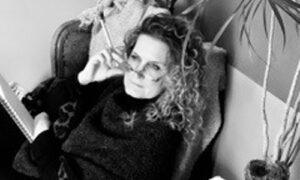
Warning: This story contains mentions of suicide that may be triggering to some readers.
Jill Christine’s brain injury story is one 35 years in the making. It’s a story filled with ups and downs, one Jill has been hesitant to tell. Today, at age 53, she’s ready to share the wealth of information she’s picked up along the way to help others — especially women like her who may not receive the resources they need and struggle in silence.
Born at Marine Corps Base Camp Lejeune in Jacksonville, N.C., Jill was the only child in a military family that moved around frequently. Due to exposure to chemical contaminants at Camp Lejeune, she was born with several birth defects, including a clubbed foot and hip dysplasia.
A sports fanatic all her life, Jill competed in several different sports as a child. She started off playing soccer at age five, then got into gymnastics, skating, and competitive diving. Her father was a former football player, and the family loved following the University of Michigan football team.
Two days after her high school graduation in 1988, Jill was driving her Fiat Spider when she ran over a pothole, lost control of the car, and drifted into the next lane before being hit head-on by an oncoming van. She suffered a traumatic brain injury (TBI), as her head was split open at the top, among a series of other serious injuries. Jill had to rely on crutches for 10 months, and it was three full years before she had a full set of permanent teeth. She also struggled with amnesia, losing half of the memory from her first 18 years. Altogether, Jill underwent 35 surgeries during recovery.
“The worst part about the days, weeks, and months after was the feeling that life would never get better,” said Jill.
Eventually, Jill felt well enough to enroll at the University of Michigan for her studies. But because of her recurring issues with memory, she took half semesters off, and it took double the time to graduate.
After finishing school, Jill dabbled in a few industries, including construction, before pursuing a nursing degree, following in the footsteps of her grandmother, who was the head nurse at her hospital. Upon receiving her degree, Jill joined an intensive care unit where she took care of aging patients. A few years in healthcare, however, made her realize this career path wasn’t a great fit.
“I was so fed up with the dismissive nature of people in medicine who are supposed to act like professionals,” said Jill. “It reminded me of my experience as a TBI patient and at times not being taken seriously.”
After her accident, Jill has had her share of ups and downs, including bouts of depression and thoughts of suicide. The injury impacted her reproductive endocrinology, leading to infertility and miscarriages. A bone density exam showed signs of osteoporosis, and she also developed arrhythmia. Jill had married a man in the military, but he was abusive. Her father was largely absent. The only people in Jill’s life she felt she could count on were her mother, her grandfather, and a friend named KP.
From a young age, Jill’s mother taught her we are all responsible for our own happiness. There was no room for excuses in life – if you wanted something bad enough, you had to work harder for it. Find the root cause of a problem and have the drive to get the answers you need. Adapting to any situation was important, so was refusing to quit when the going got tough.
“My mother sacrificed so much for me and is the reason why I am still here,” said Jill. “She taught me humility, kindness, grit, fortitude, but most importantly, how to function in a world blind to the challenges I faced.”
Jill’s mother also emphasized the importance of service for others – not just to help them, but to heal the soul. Going through the trauma of her accident, Jill spent many moments trying to understand the purpose of her life and why she was still here. Though she didn’t know it at the time, Jill’s experience would end up being a gift. Three decades later, she has begun to harness of the power of her injury and use her perspective in the hopes of making substantive changes for the millions struggling from the devastating effects of traumatic brain injury (TBI).
KP came into Jill’s life later as an adult. Jill calls her a woman of deep faith, a guiding light, and a true blessing on Earth.
“She possessed the strong personality traits I was struggling to understand in myself, new traits that were born out of my head injury and drastically different from the meek and quiet girl I used to be,” said Jill.
KP and Jill’s mother were pivotal in Jill’s adjustment to life with a brain injury. Though they were opposites in personality, both were incredibly loving, fiercely loyal, extremely smart women who taught Jill strength, courage, and how to survive in a world which might not understand what she was going through.
“My mom encouraged all of the softer things in me, and KP told me to stand my ground unwaveringly,” said Jill. “Between the two of them, they taught me how to take on the world with grace and be able to withstand the storms that would undoubtedly arise.”
The effects of Jill’s brain injury last even to this day. In the beginning, she self-medicated with alcohol, trying to calm the countless thoughts swirling in her head. She couldn’t understand what was happening, why she was becoming so irritable, and why she could no longer pay attention. She recalls physicians showing little compassion, ignoring her symptoms and prescribing drugs with seemingly no rhyme or reason. It didn’t help that navigating health insurance was frustratingly complex — not to mention expensive — especially once she got divorced.
“I kept running into so many dead ends,” said Jill. “I simply got a slap on the back on my way out the door and as a result, my journey has really been off the beaten path.”
In her 30s, Jill began reading everything in sight to try and get better on her own. She figured out keeping herself isolated was extremely helpful in keeping her symptoms at bay. Medical marijuana also helped, and she was a big supporter of its legalization in Michigan, where she lives. Jill focuses on a holistic recovery approach and believes many complications from injury can be treated using natural methods instead of focusing too heavily on pharmaceuticals.
To that end, one of the hobbies Jill has incorporated into her daily life is gardening, which she says has been her salvation. She calls it the best form of therapy and says it brings many mental health benefits.
“There are so many parallels between gardening and living,” said Jill. “There is a need to constantly prune and tend to your life as you would a garden. There is power in spending time ruminating in your garden and much to be learned from the renewal of life occurring each year. It’s important to know when one season ends and when it is time to till soil for the next.”
Jill has become a strong believer in patient advocacy and standing up for yourself. She wants everyone to take charge of their own health, trying out treatments until finding one that works.
Similarly, Jill also hopes her story resonates with those in the military. Though she may not have served, she says there is a unique opportunity for the VA to explore how brain injuries can affect men and women differently. She hopes the VA specifically studies female veterans who may have been exposed to chemical contaminants at military installations and how those exposures can impact their brains and bodies.
“I want to shed light on all those who once were a part of the community, either through a spouse or parent, and then simply dropped later on without the help they desperately need,” said Jill. “It’s unfortunate people who need help the most are the ones left behind. Women present the science and medical communities with a unique opportunity to investigate what has transpired inside a body like mine over 35 years, following a TBI that has systematically impacted every body system.”
While searching for solutions online, Jill happened to read about the Concussion Legacy Foundation in a news article. Exploring CLF’s website, she was impressed with the data-driven research and science behind many of its resources and programs. Recently, Jill has participated in CLF Zoom Support Groups, which she has found extremely helpful and therapeutic.
“I am so happy I can share my experience with others like me, and listen to their stories as well,” said Jill. “This community has helped me realize I’m not alone.”
Jill has many reasons for sharing her story at this moment: anger at the medical professionals who mostly ignored her and others with TBIs; proof someone with a TBI can still live, survive, and thrive even three decades later; and the desire to use her talents to help others who did not have the same resources as her. Jill acknowledges the effects of her injury evolve every year, but she is still persevering in her journey.
Through everything, Jill’s mother continues to stay with her. Though she passed away in 2016 after battling breast cancer, Jill still hears her voice every day telling her to keep going and to never lose the will to fight.
“I’ll never give up, as long as I’m here.”
___________________________________________
Suicide is preventable and help is available. If you are concerned that someone in your life may be suicidal, the five #BeThe1To steps are simple actions anyone can take to help someone in crisis. If you are struggling to cope and would like some emotional support, call the Suicide and Crisis Lifeline at 988 to connect with a trained counselor. It’s free, confidential, and available to everyone in the United States. You do not have to be suicidal to call.
Are you or someone you know struggling with lingering concussion symptoms? We support patients and families through the CLF HelpLine, providing personalized help to those struggling with the outcomes of brain injury. Submit your request today and a dedicated member of the Concussion Legacy Foundation team will be happy to assist you.
Roger Pollard
Article originally from the Miami Herald
Coach Roger Pollard’s Life Celebration
Coach Roger Pollard was a beloved Gables High teacher, charismatic leader, successful coach, talented author, and loving husband to his wife Shay and adoring dad of their twins.
He took his own life on January 24th, 2024.
Jonathan Vilma, three time NFL Pro Bowler who won a National Championship at the University of Miami and a Super Bowl with the New Orleans Saints, was a lifelong friend and teammate of Pollard at Gables High.
“Roger was a giver, focused on others,” said Vilma. “The outpouring of grief is evidence of the impact he had on all who knew and learned from him as a teacher, friend, coach and teammate.”
In accordance with Coach Pollard’s instructions, his wife Shay has made arrangements with the UNITE Brain Bank in Boston, the largest tissue repository in the world focused on traumatic brain injury and chronic traumatic encephalopathy (CTE). In Roger Pollard’s last act of giving, researchers will study his brain to see if there were any signs of CTE. Regardless of the findings, UNITE will continue to deepen society’s understanding of CTE in an effort to help prevent future tragedies.
“Coach Pollard was a class act, absolutely brilliant, and will be sorely missed,” said Jessica Landsberg, a former student and basketball player at Gables High who works as a local political consultant. “But don’t be fooled: as great a football coach as he was, developing great men and great students always came first – I’m forever thankful for the uplifting words from Coach Pollard when I was in my own basketball slumps.”
Talented Athlete and Coach
Roger Pollard grew up in Fairway Heights and made an early impact as an outstanding athlete in a community that produces more Division I and NFL football players than anywhere in the country. Roger attended Carver and Gables High and Pollard’s parents, Ralph and Cynthia, ensured that his athletic prowess was coupled with a strong moral base, a curious mind, and solid academics.
That combination resulted in Pollard receiving a scholarship to play football at North Carolina State, where Roger also achieved high academic honors. Pollard would always say that football was the tool he used to get his sociology degree and Master’s in Sport Management.
Successful Coach
After returning to Gables High to coach a few seasons, Pollard had the opportunity to coach at Middle Tennessee State. Pollard returned home after completing his Master’s degree to take over the head coaching position at Gables High.
Buddy Howell, who played on Coach Pollard’s first district championship team and went on to play at Florida Atlantic and four years of professional football with the Houston Texans and LA Rams, said that Coach Pollard gave his players and students someone to look up to that had gone to the next level and gave them the discipline and faith in each other to make that happen. “He showed and coached me how to grow as a leader by accepting adversity and fighting through it.”
Talented Teacher and Author
After 15 years of coaching, ten as a head coach, Coach Pollard decided to devote his full attention to teaching and writing. The author of five books, two on football strategy and technique and three on personal motivation and achievement, Coach Pollard loved nothing more than helping young people learn how to achieve their dreams and maximize their potential.
In the dedication to his The Book Everyone Should Read – Motivation and You, Coach Pollard wrote:
“To Tiger, Jordyn, and Shay, you are my foundation and ceiling, the pillars which I both rest upon and stand. My wife, without whom I would be lost, words would do your meaning no justice, know you are loved. My parents, Ralph and Cynthia, the first thing everyone is; a child. Your role as parents has and will always be that of perfection. To my friends, lifelong friends, acquaintance, and mentors. To the angriest of you, the calmest, the lawyers and accountants, all of you who have been, are or will be my corner: the most beautiful thing about reality is the infinite layers each moment of experience contains if you’re willing to dissect it.”
The pain that the community feels about the loss of Coach Pollard is the flip side of the love he showed us and the investment he made in our children and our community. It hurts so bad that his life was cut short because he had such an outsized impact.
So let us accept the challenge Coach Pollard constantly posed: What is your truth and what are you doing to discover it?
The family has set up a GoFundMe page for those wishing to make a contribution to the Jojo & Tiger Education Fund: https://gofund.me/284355fb
Corey Davis
Warning: This story contains mentions of suicide that may be triggering to some readers.
Athletic beginnings
Corey Davis was raised in Union, New Jersey, and from a young age, football was his passion. Inspired by the movie Little Giants, he fell in love with the sport at just five years old. What started as a fascination with the game quickly turned into a full-blown obsession. Corey began playing flag football and later joined Pop Warner, where his skills quickly stood out. His heart and determination were evident both on and off the field.
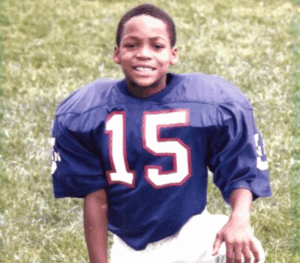
Corey’s high school years were spent at St. Peter’s Prep in Jersey City, NJ, where he played defensive back, running back, and wide receiver. He made an immediate impact as a freshman, breaking the school’s record by scoring 32 touchdowns in a single season. He was known not just for his athleticism but also for his leadership and unwavering commitment to the team. Corey’s talent earned him a scholarship to James Madison University, where he continued his football career at the collegiate level.
It was during Corey’s second year at JMU that those close to him noticed subtle changes in his behavior. We knew he’d suffered a few concussions in high school, and did see signs of aggression and moodiness, but chalked that up to puberty. Now, without family to watch over him, seemingly small issues soon escalated.
Corey found himself involved in several altercations, leading to the loss of his football scholarship. Deeply remorseful, Corey knew he needed a fresh start. He transferred to Elizabeth City State University to pursue his dream of pro football, once again playing defensive back on the field.
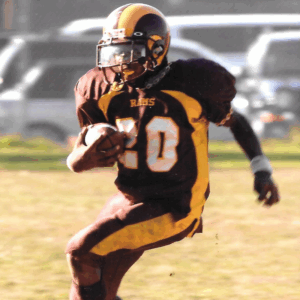
Gradual decline
For a time, it seemed like the fresh start was helping Corey. But during a break at home, we again saw signs of trouble — depression, uncontrollable mood swings, and drug addiction which would eventually take over his life. After taking time off from school to get help, Corey never returned to finish his education.
The next decade was spent managing the mental and emotional battles marked by suspected CTE. Corey was anxious, irritable, and confused. He’d get into a deep sleep and not wake up for a long time. Conversely, he wouldn’t sleep for days because of hearing voices in his head.
Corey tried so hard to express his suffering to those closest to him but could never quite put into words what was happening inside. Despite his efforts to push through, the weight of his internal burdens became unbearable.
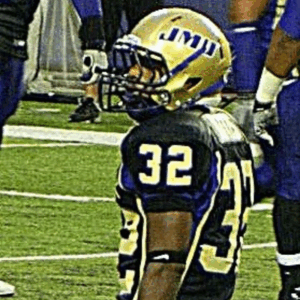
Corey took his life on June 11, 2024, at the age of 32. The manner of his passing and his behavior right before death reminded us of other football players who died and were later diagnosed with CTE. We immediately contacted the UNITE Brain Bank and donated Corey’s brain for study. It took a little less than a year for researchers to confirm he had stage 2 (of 4) CTE.
Corey’s passing was a devastating loss to us, his friends, and all who knew him. Even in his darkest moments, he never lost the essence of who he was. He was kind, caring, and always sought to make others laugh. His wit, sarcasm, and sense of humor brightened many days. Even through his problems, we knew Corey’s heart was always in the right place.
While his struggles were immense, Corey’s Legacy Story is one of resilience, passion, and a deep love for those around him. His life reminds us of the importance of understanding the effects of repeated brain trauma, and of the need to offer support to those suffering in silence.
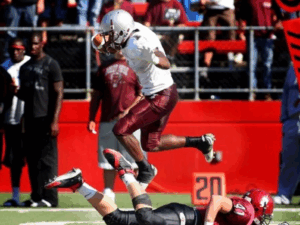
For any families reading this story and dealing with a similar experience, we know it can be hard to understand why a loved one is suddenly changing. Still, we urge you to listen to them and support them as much as possible. We’ve also spoken to Corey’s high school football coach, who’s vowed to spread awareness around the impact of concussions to his young players.
Corey is best remembered as a talented athlete, a loving son, grandson, brother, uncle, and friend — someone who, despite his pain, always tried to bring joy to those around him. He will forever be in our hearts, not just for the challenges he faced, but for the soul he shared with the world.
________________________________________
Suicide is preventable and help is available. If you are concerned that someone in your life may be suicidal, the five #BeThe1To steps are simple actions anyone can take to help someone in crisis. If you are struggling to cope and would like some emotional support, call the 988 Suicide & Crisis Lifeline at 988 to connect with a trained counselor. It’s free, confidential, and available to everyone in the United States. You do not have to be suicidal to call.
Are you or someone you know struggling with lingering concussion symptoms? We support patients and families through the CLF HelpLine, providing personalized help to those struggling with the outcomes of brain injury. Submit your request today and a dedicated member of the Concussion Legacy Foundation team will be happy to assist you.